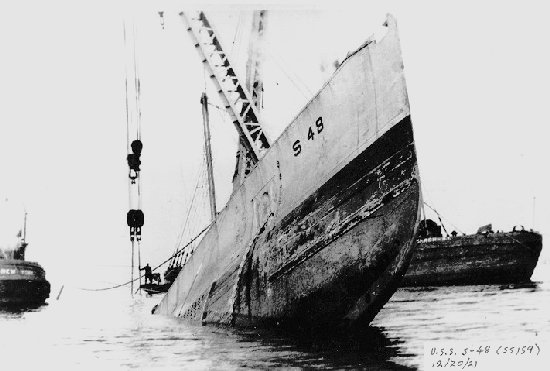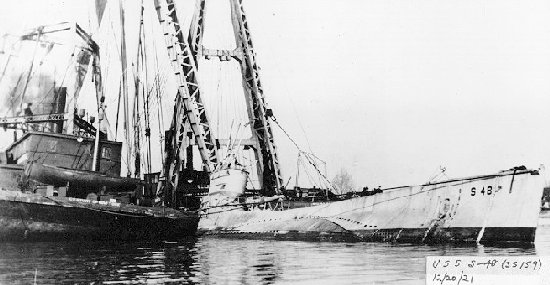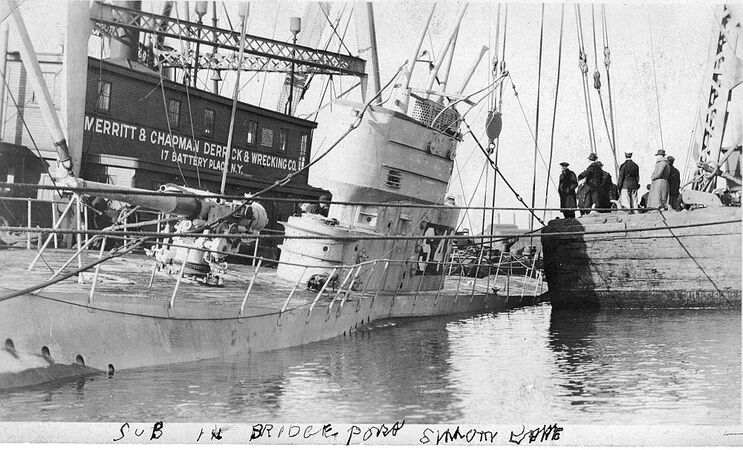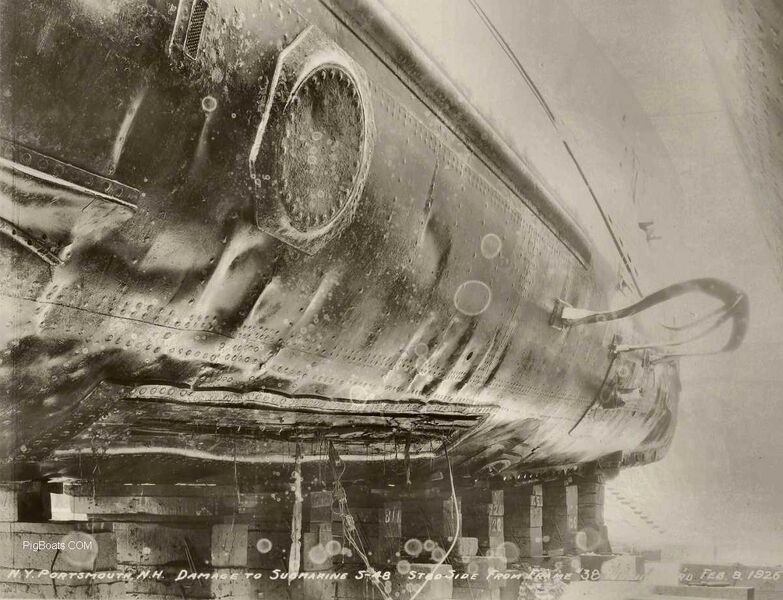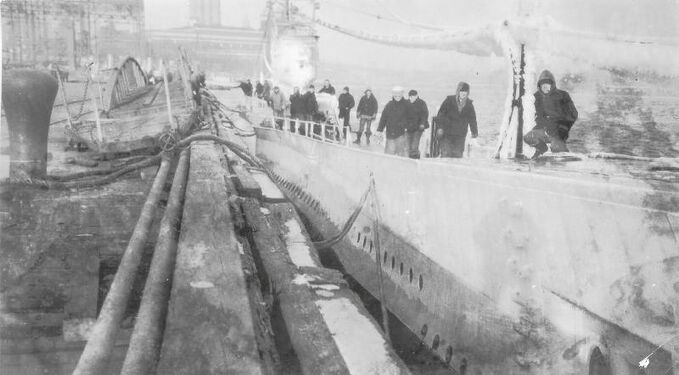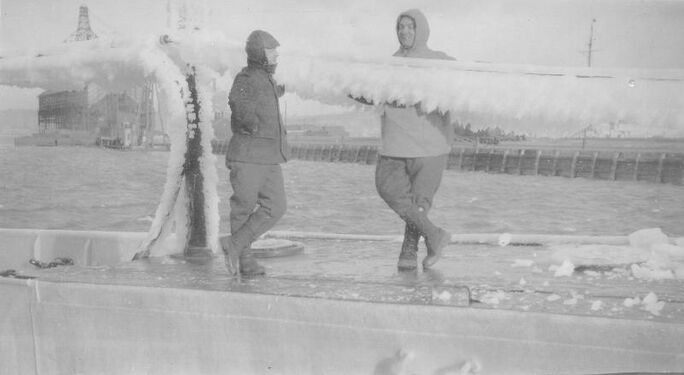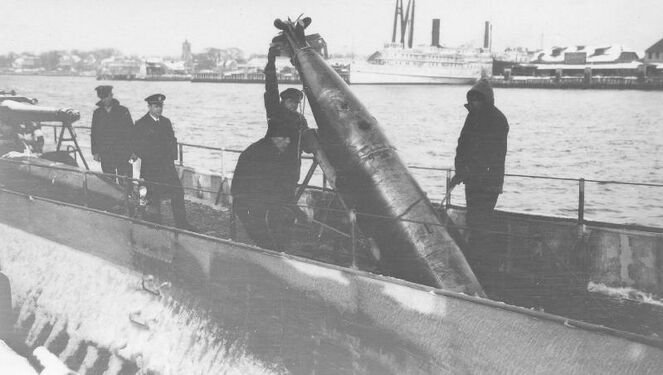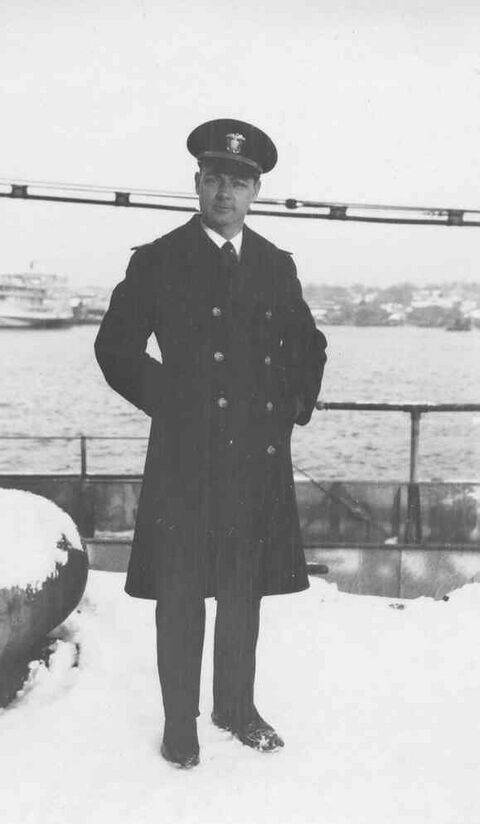S-48

U.S. Navy photo NH 108448 courtesy of the NHHC.

U.S. Navy photo NH 108453 via the NHHC.

There is another woman in tribal dress on the left and she is wearing a number of beaded necklaces. On her dress on the lower front is a swastika. It has nothing to do with the Nazi party at this time. It is an ancient symbol that has history going back thousands of years and has various meanings depending on the region of the world it appears. The word swastika derives from the Sanskrit "svastika" meaning "lucky or auspicious object". it is commonly used as a religious symbol in Hinduism and Buddhism. It was considered as a luck symbol in many cultures.
Photo in the private collection of Ric Hedman.

U.S. Navy photo NH 108451 courtesy of the NHHC.

U.S. Navy photo NH 108449 courtesy of the NHHC.

U.S. Navy photo NH 108450 courtesy of the NHHC.
-
U.S. Navy photo.
-
Photo courtesy of T. Gray Curtis.

Photo in the private collection of Ric Hedman.
-
U.S. Navy photo.
-
Photo in the private collection of Ric Hedman.
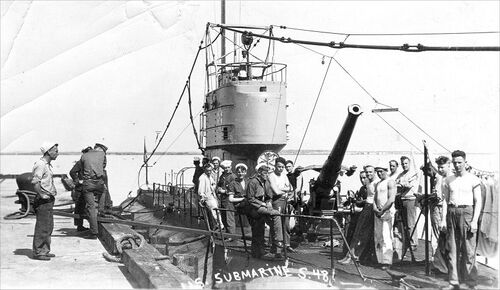
Photo in the private collection of Ric Hedman.

Photo in the private collection of Ric Hedman.
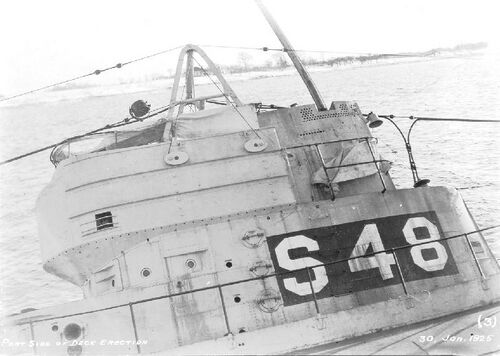
Photo in the private collection of Ric Hedman.

U.S. Navy photo.

U.S. Navy photo.

U.S. Navy photo.
U.S. Navy photos.

Photo in the private collection of Ric Hedman.
Photos in the private collection of Ric Hedman.
Photos in the private collection of Ric Hedman.

Photos in the private collection of Ric Hedman.

Photos in the private collection of Ric Hedman.

Photos in the private collection of Ric Hedman.

U.S. Navy photo.

Photo in the private collection of Ric Hedman.

Photo in the private collection of Ric Hedman.

The second man seated from the left is a First Class Petty Officer with over eight years service but we are unable to tell what his rate is. The man at the top of the image is striking a pretty dramatic pose for the camera. He also seems to be maybe Hawaiian or Guamanian and at the time this was taken he would either be a cook or officer's steward. People of "color" were limited as to what they were allowed to do in the post WW I segregated Navy.
Photo in the private collection of Ric Hedman.

The next two men are qualified watch standers, one in the Engineering field. The man with the stripe around his left shoulder would have had a red not black stripe meaning he was striking for either Machinist Mate, Engineman, or Electricians Mate. They are not Submarine Qualified yet.
The next two men are both Submarine Qualified.
One of the subs life rings with the sub's name on it is hung on the side of the conning tower fairwater. The black canister probably holds a length of line attached to both the life ring and submarine. These would have been taken below before diving.
Photo in the private collection of Ric Hedman.

The man to the left of the Second Class is probably a Filipino and is most likely an officer's steward, again, due to the segregation in the services created by President Wilson that persons of "color" were restricted in jobs they were allowed to perform.
The officer on the right is Submarine Qualified. He is wearing his gold plated Dolphins on his left chest. He is a Lieutenant Junior Grade indicated by the 1½ stripes on his shoulder boards. The star next to the stripes means he is a "Line Officer" and can succeed to command of a vessel.
Photo in the private collection of Ric Hedman.

Photo in the private collection of Ric Hedman.

The next man is a fireman striker noted by the stripe over and under the left shoulder. He is a qualified watch stander and Submarine Qualified.
The next man is a petty officer and is Submarine Qualified. The badge on his right arm with the star above looks to to be a Gun Pointer/Gun Director First Class badge that may mean the man is probably a Gunner's Mate and perhaps the Gun Captain for the S-48's 4"/50 caliber deck gun.
The next man in the front row is a "hot running" Second Class Electricians Mate with no "hash marks" meaning he has made "rate" in under 4 years. We can't see his right arm to see if he is Qualified. The man directly behind is a First Class Electrician. The three hash marks mean over 12 years active service in the Navy and he has also Qualified in Submarines.
The man in the middle moved and is, unfortunately, blurred for posterity. The next two men are Submarine Qualified. The to the left is a Third Class Petty Officer with over eight years service. Rate unknown. The man on the right is a Second Class Machinist Mate with some time over 4 years active service.
Of the last two men in the second row, the man on the left is a firemen striker but that is just about all that can be found out from this photo. The man on the right is a First Class Petty Officer with over eight years service.
The last two men in the third row are seen as a Third Class Petty Officer with over eight years service and the other man is a fireman striker with a hash mark meaning over 4 years service.
Photo in the private collection of Ric Hedman.

U.S. Navy photo.
Page created by:
Ric Hedman & David Johnston
1999 - 2023 - PigBoats.COM©
Mountlake Terrace, WA, Norfolk, VA
webmaster at pigboats dot com

